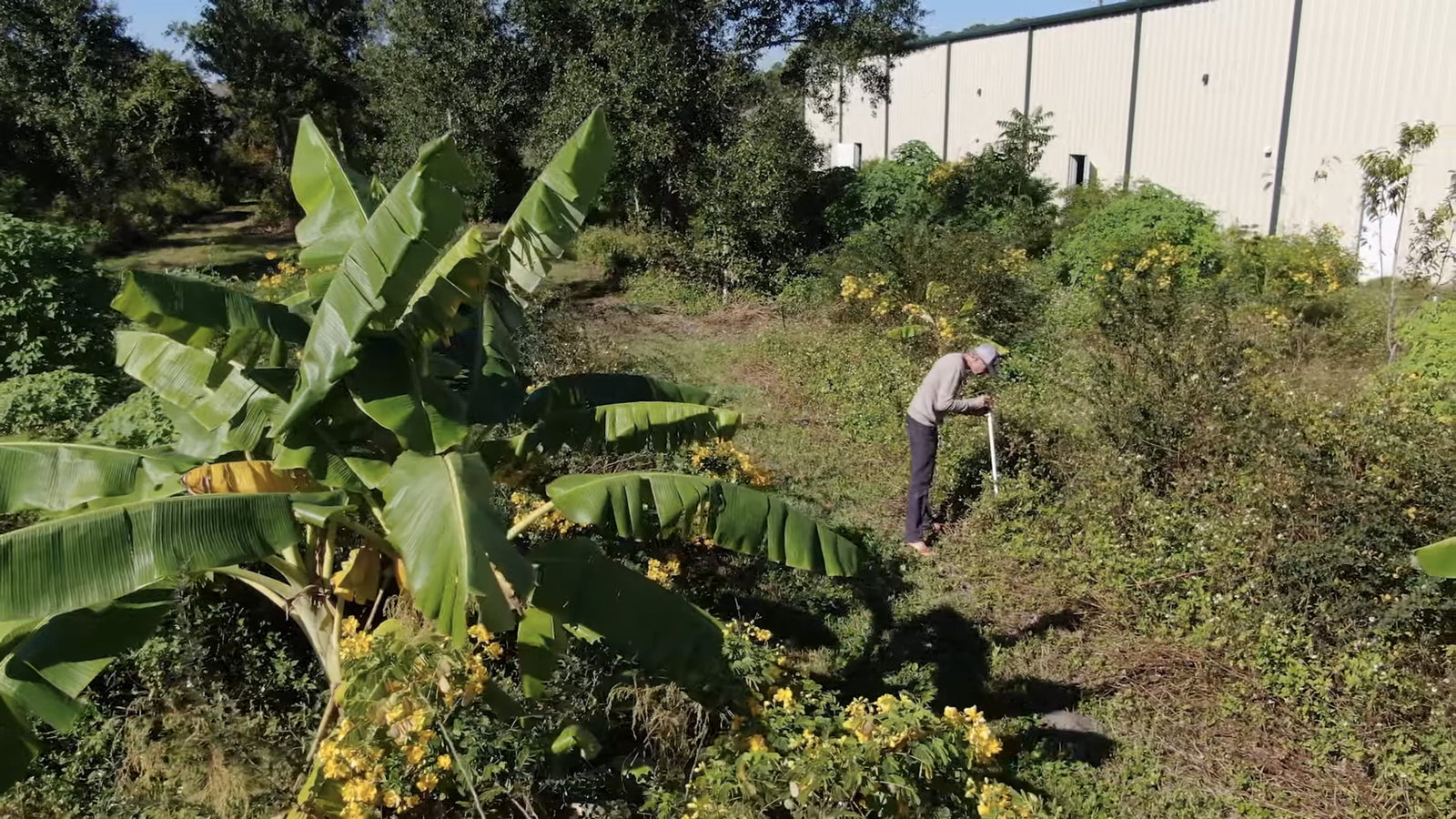Growing Our Own Corporate Responsibility: The St. Augustine Food Forest Project
Tired of trying to wrap your head around the vague promises of corporations claiming “responsibility,” without any real idea of what’s being done? We were too. So here at Conner Hats, we’re sowing the seeds of change right next door to our warehouse.


No matter how much care is taken to source sustainable materials, choose plastic-free packaging, and reduce waste, every item made has some impact on the world. And we’ve been taught to always clean up after ourselves, so we’re taking responsibility for our footprint. That’s why we’ve chosen to invest in a food forest project that is cleaning up the air, soil, and water right next to our warehouse- all while benefiting the local community. We can’t wait to show you what we’re growing, but first- you need to know why food forests are so special.
Not Just Any Trees, Food Forest Trees
When it comes to giving back, tree-planting initiatives are nothing new. And, for good reason. Studies show that tree reforestation remains one of the most effective strategies to combat climate change. But, not all trees are the same.
Most tree-planting initiatives focus purely on reforestation, which is an essential formula when it comes to capturing carbon from the atmosphere. But what if trees could do that and provide solutions to hunger and poverty at the same time? That’s where food forest trees come in.
Food Forest 101
A food forest, or a forest garden, is an array of edible trees, bushes, and other foliage planted to best mimic ecosystems already found in nature. When given the resources needed, these forests grow quickly, become self-sufficient, and offer an output of edible crops that provide healthy food and a sustainable income for those who tend them. All in addition to capturing carbon, healing damaged soil, and preventing erosion. To better understand exactly how food forest science works, check out this video by our friend and mentor, Geoff Lawton.
The Magic Is In The Layers
Just like any native forest, forest gardens are made up of seven or eight distinct layers. All have their purpose to play in the healthy ecosystem that’s being created. Some offer shade, others attract pollinators, and many are “nitrogen fixers” that pull nitrogen into the soil and help other plants thrive. In a food forest system, these layers also produce food- whether it be bananas, nuts, or legumes. In this way, the natural ease of a healthy, symbiotic forest is harnessed to offer additional benefits to the people who manage these forests. Pretty special, isn’t it?
Conner Hats Food Forest Initiative
Once we understood the unique and multifaceted benefits of food forests, we knew it was time to support their growth through our business. With a vision of revitalization and education, we dove into the process of turning the abandoned acre of land next to our warehouse into an ecosystem teeming with life.

The St. Augustine Food Forest Project
There’s something so powerful about seeing positive change happen right under your fingertips. That’s why we are building our very own food forest right next to the original Conner Hats warehouse in St. Augustine, Florida. By proving what can be accomplished with a single acre of land, we hope to inspire other companies to create positive change in their own backyards too.
Real Corporate Responsibility
With the help of renowned permaculturist Geoff Lawton, the one-acre slice of raw land next to our one-acre warehouse in the heart of industrial St. Augustine is slowly blooming into a forest garden. This project directly captures our warehouses' carbon emissions, produces food for the local community, and, perhaps most importantly, will serve as a place of learning and connection for future generations. Having a tangible project directly connected to our warehouse doesn’t just help us clean up our carbon footprint, it also serves as a reminder for our employees that the natural world impacts us as much as we impact it. And when nature thrives, so do we.
Turning abandoned land back into a thriving ecosystem is a slow process, and we are excited about each inch of new growth. The St. Augustine Food Forest Project broke ground in 2018, and since then, we have seen abundant growth, harvested our first bounties, and are seeing the land regenerate each day. While the St. Augustine Food Forest is not yet open to the public, you can follow along with our progress via social media. You can also take a virtual tour with our founder below.
Real Solutions, Right Now
The challenges we face regarding climate change can feel overwhelming. But as we’ve quickly learned, nature already holds the solutions to our most pressing issues. Real change is possible, and it can happen quicker than you might imagine.
Here at Conner Hats, we only have to look at the life teeming in the once-abandoned lot next to our warehouse to feel the hope. With out-of-the-box ideas (and the support of people like you), we can do business that improves the world.

